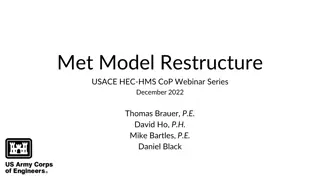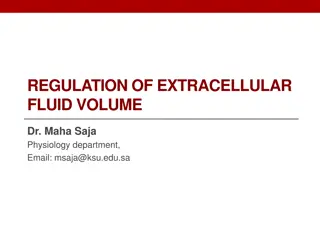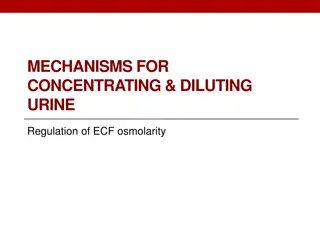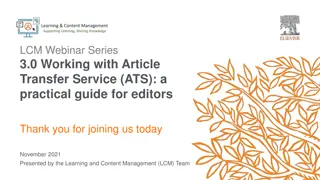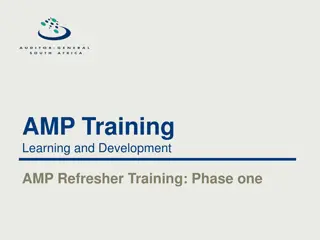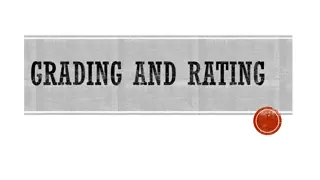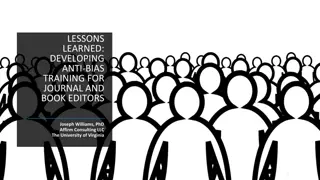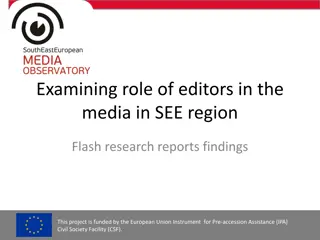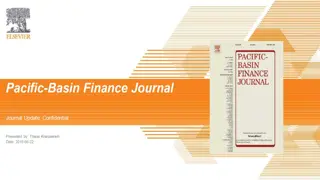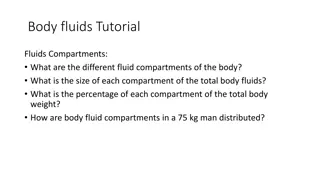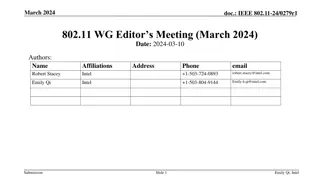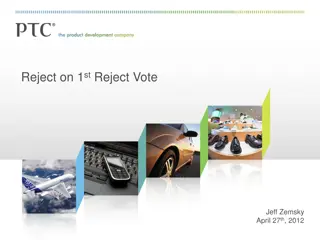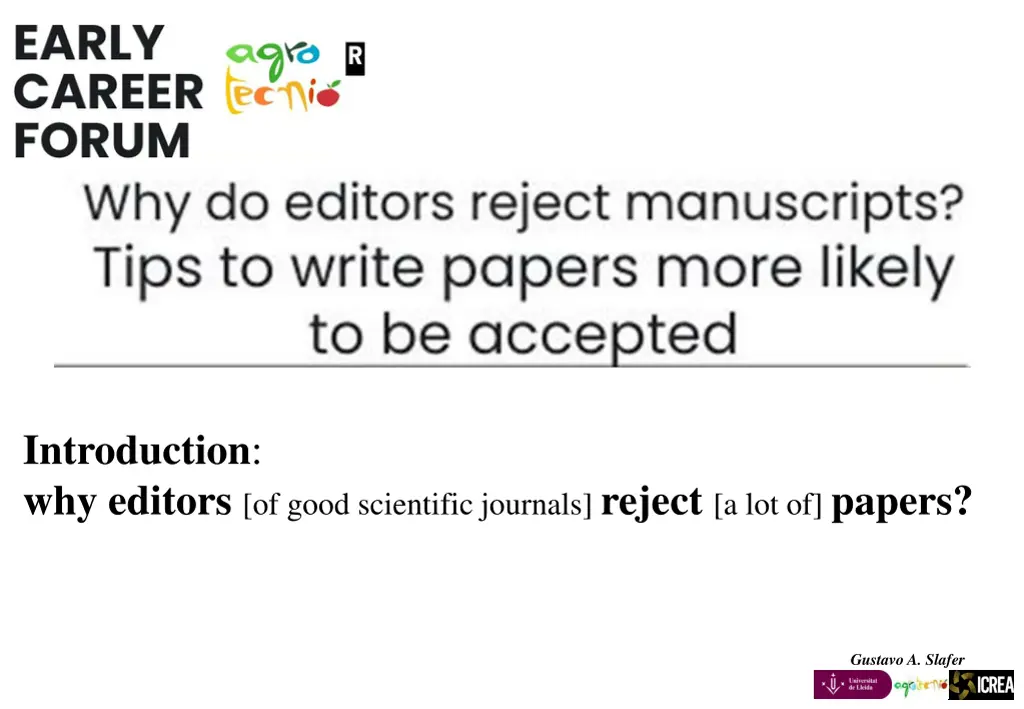
Understanding Why Editors Reject Many Scientific Papers
Discover the reasons behind the rejection of numerous papers by editors of good scientific journals and the importance of publishing better quality papers for readers. Learn how submissions are scrutinized for relevance and novelty to meet the high standards set by prestigious journals.
Download Presentation

Please find below an Image/Link to download the presentation.
The content on the website is provided AS IS for your information and personal use only. It may not be sold, licensed, or shared on other websites without obtaining consent from the author. If you encounter any issues during the download, it is possible that the publisher has removed the file from their server.
You are allowed to download the files provided on this website for personal or commercial use, subject to the condition that they are used lawfully. All files are the property of their respective owners.
The content on the website is provided AS IS for your information and personal use only. It may not be sold, licensed, or shared on other websites without obtaining consent from the author.
E N D
Presentation Transcript
Introduction: why editors [of good scientific journals] reject [a lot of] papers? Gustavo A. Slafer
Editor and Reviewers Huge discrimination Papers in scientific journals Author Reader Papers are published for the readers NOT for the authors Gustavo A. Slafer
How much must a Reader read? Ideal world: EVERYTHING How much is everything? 1.8 million articles published each year 2012 STM Report (International Association of Scientific, Technical and Medical Publishers) Annual research article output (3% annual growth) Doubling time for annual output for articles of just under 24 years Jinha, 2010. Learned Publishing, 23:258 263 Gustavo A. Slafer
# of papers published in scientific journals per year [c. 2,000,000 papers y-1] What about you? (and each of the readers of scientific papers in the world) # of papers published in my topic [c. 5K y-1] # of papers published in my field [c. 100K y-1] # of papers I read (and not always in full) [c. 100 y-1] Gustavo A. Slafer
Journals are published for readers Readers cannot read more than a tiny fraction of what they think they should read! There is no sense in publishing more papers, and There is a lot of sense in publishing better papers (so that readers are not disappointed very often and have a good objective criterion for discriminating what to read and what to ignore) Gustavo A. Slafer
Good journals reject 75-85% of mss submitted And ONLY receive papers that authors consider good enough Most papers rejected may not be bad , simply not good enough Most papers rejected in top journals in our field would be acceptable in Q3 or Q4 journals (they are not flawed, they simply are not novel enough and/or not relevant enough for the top-ranked journals in the field). But we write for readers, and they discriminate heavily against les respected journals If we want our papers to be published in the journals most respected in our field, doing great research may not be enough: we need the editors (and reviewers) to consider our submission within the best Gustavo A. Slafer
Why papers are rejected? A. Through technical screening (before passing to the Editor) a. Plagiarism (including self-plagiarism!) b. Paper under review at another journal c. Missing parts d. Quality of the language is not sufficient for review B. Desk-rejection by the Editor (before peer-review) All A plus a. Scope (true scope, regardless of the declared scope ) b. Over-ambitious research (results difficult to interpret or may even be flawed = divide into understandable units avoiding MUPs) c. Poor/Inexistent hypothesis (unclear, or poorly formulated, or not relevant research question) d. Major flaws in the procedures, presentation, analysis of the data, or arguments e. Lack of adherence to journal guidelines to authors Gustavo A. Slafer
Why papers are rejected? C. After peer review All A+B plus a. Inadequate problem statement b. Inappropriate/outdated literature used (or biased to self-citation without justification) c. Not clear the relevance d. Not clear the novelty e. Inadequate research design f. Sampling problems (size, timing, details) g. Poor data collection (instruments, timing) h. Inadequate analyses (including statistical analyses) i. Unclear presentation of Results j. Inconsistency Results-Aims k. Inappropriate discussion (internal coherence), not just adding refs, proper interpretation // reasonable and justified speculation [while avoiding overinterpretation ] l. Conclusions NOT supported by Results Gustavo A. Slafer
Options for rejected submissions 1. Appeal the decision (depending on the result, submit a revised version) a. decision was unfair (intentional[??] // major flaws in the review process) b.decision was fair but you think the major problems identified can be solved 2. Submit your REVISED manuscript to a different journal 3. Discard the manuscript and never resubmit it a. You understand the problem and recognise it is better NOT to publish that work (to avoid working more to publish the ms in an obscure journal (and if the ms is seen by a colleague you would not feel proud) Gustavo A. Slafer
Quality of research is essential. But it may not be enough. Quality in writing to highlight the scientific quality is critical, for acceptance and even more for impact with the potential readers (many papers in best journals are ignored) Robert will trigger some ideas for later discussion on this Gustavo A. Slafer


